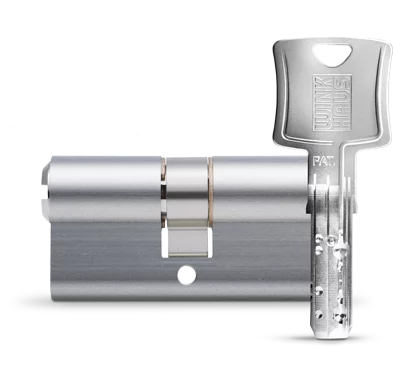What does a locking cylinder actually look like from the inside?
We use many of the technical things we come into contact with on a daily basis almost blindly without giving much thought to the technology behind them. The really exciting details are often hidden, as the “Epoch Times” recently illustrated in a very exciting report. From aircraft to CT scanners, you can gain illuminating insights into the inner workings of things we usually only know about on the surface.
The same goes for locking cylinders. In fact, most of us only know the key channel, i.e. the opening which the key goes into every day. Some of us may already have removed or installed a cylinder.
But have you disassembled one or viewed it from the side? Not many people at all have done that. But what does a locking cylinder look like from the inside and what is it made up of?
As already mentioned above, the key channel, i.e. the visible part which the key goes into, would be the first thing you see. This is located in the “core” of the locking cylinder. Locking cylinders can also be equipped with protection to prevent it from being drilled or pulled out. This additional protection is achieved by inserting specially alloyed steel pins, for example.
There are many pins in the cylinder, which differ in shape, height and material depending on the model. In principle, the more pins and the more complex the tumbler structure, the more difficult it is to overcome the cylinder! Different core radial pins, levers and balls check the key on different locking levels for correct drill holes, routings and additional elements. When the key is inserted, all pins/levers are brought into the end position (separation plane) against spring force. If all check points on the key are now precisely defined and in place, the key is authorised to lock and the “locking secret” is removed. All tumbler elements in the cylinder release the cylinder core – and thus the cam – for rotation. The door can be opened.
In addition to the cam, which actuates the lock in the installed door, there is also a coupling in the cylinder which is responsible for the various convenience functions of the cylinder. For instance, cylinders with an emergency and danger function have a special coupling that allows closing from the outside when the key is inserted on the inside.
There is the right locking cylinder for every specific application, depending on the security and convenience requirements. The cylinder must also be ordered in the right length for the door (outside/inside dimensions).

